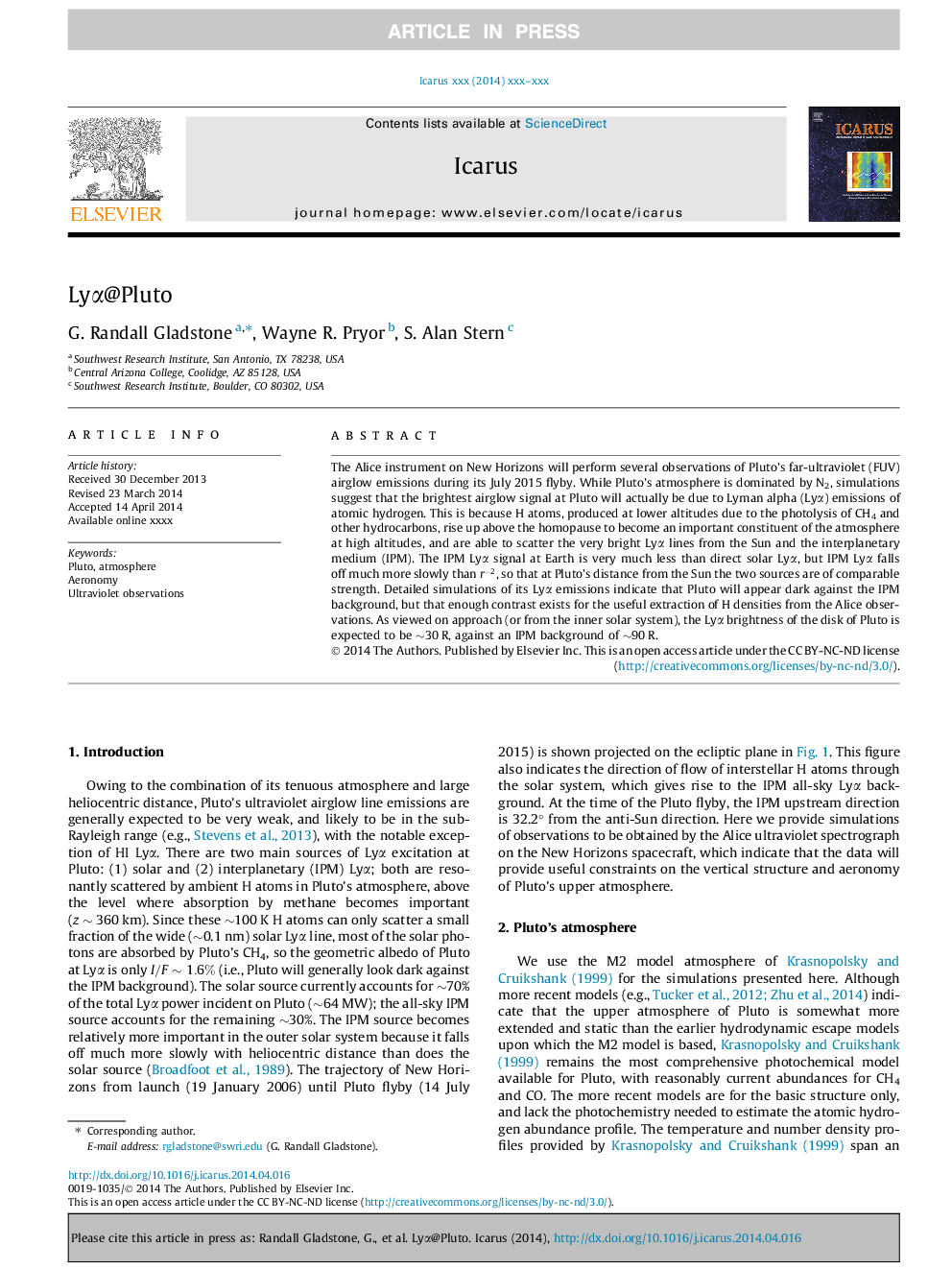| کد مقاله | کد نشریه | سال انتشار | مقاله انگلیسی | نسخه تمام متن |
|---|---|---|---|---|
| 8137262 | 1523544 | 2015 | 6 صفحه PDF | دانلود رایگان |
عنوان انگلیسی مقاله ISI
Lyα@Pluto
دانلود مقاله + سفارش ترجمه
دانلود مقاله ISI انگلیسی
رایگان برای ایرانیان
کلمات کلیدی
موضوعات مرتبط
مهندسی و علوم پایه
علوم زمین و سیارات
علوم فضا و نجوم
پیش نمایش صفحه اول مقاله

چکیده انگلیسی
The Alice instrument on New Horizons will perform several observations of Pluto's far-ultraviolet (FUV) airglow emissions during its July 2015 flyby. While Pluto's atmosphere is dominated by N2, simulations suggest that the brightest airglow signal at Pluto will actually be due to Lyman alpha (Lyα) emissions of atomic hydrogen. This is because H atoms, produced at lower altitudes due to the photolysis of CH4 and other hydrocarbons, rise up above the homopause to become an important constituent of the atmosphere at high altitudes, and are able to scatter the very bright Lyα lines from the Sun and the interplanetary medium (IPM). The IPM Lyα signal at Earth is very much less than direct solar Lyα, but IPM Lyα falls off much more slowly than r-2, so that at Pluto's distance from the Sun the two sources are of comparable strength. Detailed simulations of its Lyα emissions indicate that Pluto will appear dark against the IPM background, but that enough contrast exists for the useful extraction of H densities from the Alice observations. As viewed on approach (or from the inner solar system), the Lyα brightness of the disk of Pluto is expected to be â¼30 R, against an IPM background of â¼90 R.
ناشر
Database: Elsevier - ScienceDirect (ساینس دایرکت)
Journal: Icarus - Volume 246, 15 January 2015, Pages 279-284
Journal: Icarus - Volume 246, 15 January 2015, Pages 279-284
نویسندگان
G. Randall Gladstone, Wayne R. Pryor, S. Alan Stern,